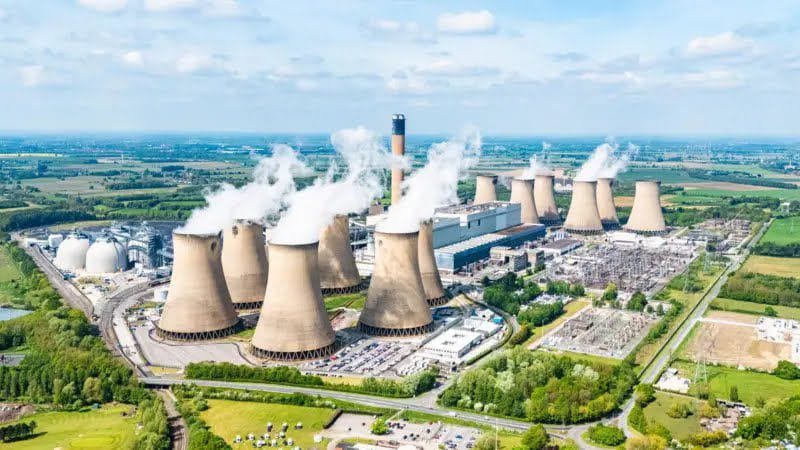The UK US nuclear partnership will fast-track reactors, create jobs, and boost clean energy investments while cutting licensing times in both countries.
The UK US nuclear partnership is set to revolutionize nuclear energy in both countries.
The agreement will fast-track reactor construction, cut regulatory delays, and unlock billions in investment.
The deal will be signed during U.S. President Donald Trump’s state visit to the United Kingdom, marking a historic moment for energy cooperation.
Downing Street called the partnership a major milestone in UK-US relations.
Officials say it will strengthen energy security, accelerate clean energy investment, and create thousands of high-quality jobs.

The partnership also includes broader collaborations in technology and culture, highlighting the growing ties between the two nations.
Britain’s Push for Nuclear Power
The UK government has prioritized nuclear energy as a key part of its clean energy strategy.
London has committed £14 billion ($19 billion) for the Sizewell C plant and is advancing plans for Rolls-Royce to develop the country’s first small modular reactors (SMRs).
Prime Minister Keir Starmer described the UK US nuclear partnership as a “game-changer” for the economy and communities.
“This is about more than powering homes. It’s about powering our ambition, creating jobs, and lowering energy bills over the long term,” he said.
By combining SMRs with other renewable sources like wind and solar, the UK aims to reduce carbon emissions while ensuring a reliable electricity supply for homes and businesses.
Major Projects Under the Partnership
Several high-profile projects are already in the works:
- X-Energy (U.S.) and Centrica (UK) plan to build up to 12 advanced modular reactors in northeast England. These reactors will provide low-carbon power for decades.
- Holtec International (U.S.), EDF (France), and Tritax plan an £11 billion ($15 billion) investment to convert the former Cottam coal-fired power station into advanced data centres powered by SMRs.
These projects are expected to create thousands of local jobs, particularly in regions transitioning from coal, while driving innovation and investment in nuclear technology.
Streamlining Nuclear Regulation
A key feature of the UK US nuclear partnership is regulatory alignment. Reactor designs that pass safety checks in one country can now be fast-tracked in the other. This is expected to reduce licensing times from three to four years down to roughly two.
U.S. Energy Secretary Chris Wright said, “These commercial deals create a pathway for faster and safer access to nuclear energy in both the U.S. and UK.” The framework encourages innovation, reduces red tape, and allows energy companies to focus on construction and technology rather than prolonged approvals.
Industry Voices
Industry leaders have praised the agreement:
- Chris O’Shea, CEO of Centrica, said the partnership will support a “resilient, affordable, low-carbon energy system.”
- J. Clay Sell, CEO of X-Energy, highlighted Hartlepool as the ideal site to scale SMR technology in the UK.
- Kris Singh, CEO of Holtec, said the data centre project will create thousands of jobs and draw on lessons from the company’s Palisades project in Michigan.
- Simone Rossi, CEO of EDF UK, emphasized that the initiative will improve Britain’s energy security.
The industry consensus is clear: the UK US nuclear partnership is a critical step for modern, sustainable energy systems.
Benefits for Communities and Consumers
Beyond large-scale projects, the partnership will directly benefit households and local communities.
By speeding up reactor construction and generating low-carbon power, it promises more stable energy bills and new employment opportunities.
For communities historically reliant on coal, the deal represents a chance to transition into modern, high-tech industries.
Prime Minister Starmer said, “This partnership powers more than electricity—it powers jobs, innovation, and our nation’s future.”
A Vision for the Future
The UK US nuclear partnership lays the foundation for a new era of nuclear energy collaboration. By combining regulatory efficiency, financial investment, and advanced technology, the deal sets a blueprint for global nuclear cooperation.
Officials expect thousands of new jobs, stronger regional economies, and enhanced energy security. With small modular reactors at the core, both countries can meet rising energy demands while reducing carbon emissions.
Ultimately, the UK US nuclear partnership is more than an agreement—it’s a roadmap for clean energy growth, economic development, and international collaboration in the 21st century.


